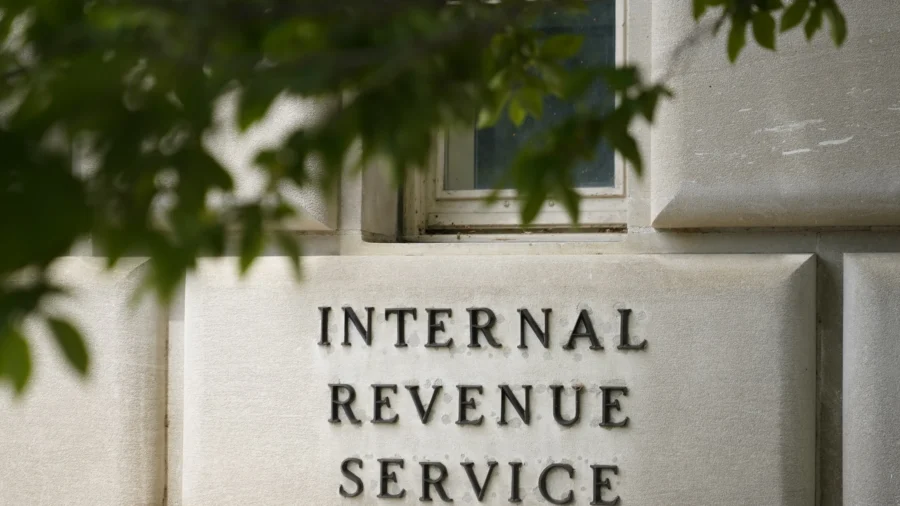The Internal Revenue Service (IRS) has responded to negative feedback from taxpayers, tax professionals, and payment processors and has decided to delay imposing a new $600 reporting threshold requirement for income received from third-party marketplaces and payment organizations like PayPal and Venmo.
As part of its much-touted tax enforcement crackdown, the IRS has been preparing to go after small sellers and service providers who are paid through third-party apps.
The tax agency was going to do so by implementing the so-called 600 rule (enacted under the American Rescue Plan), which would drastically lower the income threshold above which taxpayers are required to declare income from third-party apps and marketplaces like Etsy, eBay, CashApp, PayPal, Ticketmaster, and Venmo on Form 1099-K.
Currently, the income reporting threshold on Form 1099-K is $20,000 per year, with 200 transactions. The new reduced threshold, imposed by the American Rescue Plan when it was adopted in 2021, was supposed to be just $600 per year with any number of transactions.
While the switch to the $600 threshold was supposed to take place in 2022, taxpayer confusion and pushback from third-party apps convinced the IRS to postpone it to the tax year 2023.
And now, in the face of more feedback and pushback, the IRS announced on Nov. 21 that it’s delaying implementation yet again, retaining the current $20,000 threshold for 2023.
“As the IRS continues to work to implement the new law, the agency will treat 2023 as an additional transition year. This will reduce the potential confusion caused by the distribution of an estimated 44 million Forms 1099-K sent to many taxpayers who wouldn’t expect one and may not have a tax obligation. As a result, reporting will not be required unless the taxpayer receives over $20,000 and has more than 200 transactions in 2023,” the IRS said in a statement.
Personal transactions like gifts and shared expenses are not subject to Form 1099-K reporting requirements. However, the sale of goods, even at a loss, may still generate a Form 1099-K, even if no tax is owed on those sales.
Phased-In Approach
Citing the complexity of the new rule, as well as the large number of taxpayers affected and the need for stakeholders to have enough lead time to prepare for when the new rule goes into effect, the IRS decided to delay the $600 threshold until 2025.
“We spent many months gathering feedback from third-party groups and others, and it became increasingly clear we need additional time to effectively implement the new reporting requirements,” IRS Commissioner Danny Werfel said in a statement.
At the same time, the IRS is planning to treat tax year 2024 as part of a transitional phase and adopt a $5,000 income reporting threshold on Forms 1099-K for that year. For 2023, the reporting threshold remains at the current $20,000.
“The IRS will use this additional time to continue carefully crafting a way forward to minimize burden,” Mr. Werfel said. “We’ll work closely with third-party groups, tax professionals, and others to find the smoothest path to ensure compliance with the law.
The IRS estimates that the new rule would result in 44 million Form 1099-Ks being filed in 2024, which is an increase of roughly 30 million.
The Government Accountability Office (GAO) said in a recent analysis that the sheer number of forms being distributed to taxpayers who previously were not subject to the new $600 reporting threshold could “exacerbate taxpayer confusion” and raise the risk of non-compliance.
“This puts them at risk of inaccurately reporting their incomes to the IRS or not meeting their tax obligations,” GAO warned.
The agency also found that the IRS doesn’t have a plan to analyze all that new data flowing in from the tens of millions of new Form 1099-Ks to inform its enforcement and outreach, which “limits its understanding of changes in taxpayer burden.”
Changes to Form 1040 Also Delayed
Besides taxpayer and tax professional pushback to the planned $600 reporting threshold on Form 1099-K, the IRS’ plans to implement changes to the Form 1040 series (the tax form that over 150 million taxpayers use) also led to confusion.
The changes to the Form 1040 series, which the IRS acknowledged are “complex and take time,” were meant to make the reporting process easier for taxpayers. But given the complexity of the changes, the IRS decided that rushing things would be unhelpful.
Accordingly, the IRS has opted to postpone the changes to the Form 1040 series from 2023 to 2024.
“Taking this phased-in approach is the right thing to do for the purposes of tax administration, and it prevents unnecessary confusion as we continue to look at changes to the Form 1040. It’s clear that an additional delay for tax year 2023 will avoid problems for taxpayers, tax professionals and others in this area,” Mr. Werfel said in a statement.
Finally, despite adopting a phased-in approach and retaining the current $20,000 reporting threshold on Form 1099-K, the IRS said that companies might still issue the form for any amount.
Anyone who uses payment apps or online marketplaces to accept payment for selling goods or providing services could end up receiving Form 1099-K. This includes small businesses, crafters, sole proprietors, and people with side hustles—but it could also include casual sellers who sold personal items like clothing or resold concert tickets, even if they did so at a loss.
Even though selling items at a loss doesn’t count as taxable income, the new $600 threshold would have generated many Forms 1099-K for many people making such transactions, the IRS said.
From The Epoch Times


